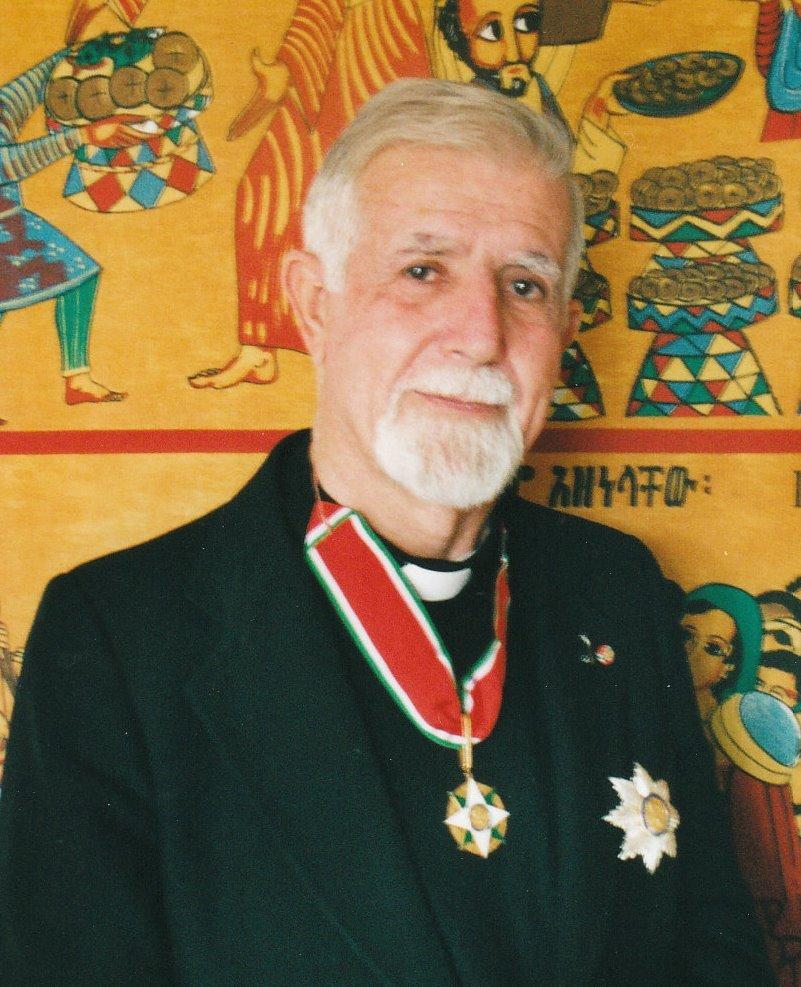Daniel Comboni
Comboni Missionaries
Institutional area
Other links
Newsletter
In Pace Christi
Pazzaglia Tarcisio
Fr. Tarcisio was born at Serravalle di Carda, in Apecchio commune, on 15 February 1934, the last of six children. “In our family – he wrote in his memoirs – the Rosary was said every evening and I used to be an altar server. Of my childhood years I remember the World War II and the Gothic Line that passed through my village; the Germans occupying two rooms of the house; the partisans, both good and bad, plundering our drapery; they arrested my father during a search”.
In 1946 he entered the Comboni seminary in Pesaro and, following the custom of the time, did Middle School at Pesaro and Secondary School at Brescia, the novitiate in Florence, High school in Verona and theology at Venegono Superiore (Milan). He was not a brilliant student, as he himself admits: “my superiors wrote that I was a good lad but a better friend of the screwdriver than the pen’”.
He was ordained priest in 1960 in Milan Cathedral and his first appointment was to Pordenone where he worked until 1964. He was then sent to England to study English in Sunningdale. He was appointed to Uganda in September 1965 and reached Kitgum (northern Uganda) among the Acholi where he lived for more than fifty years.
“When I think of Fr. Tarcisio Pazzaglia, I cannot but instinctively look back in time. Even though I met him for the last time some months ago during a missionary vigil in Pesaro, my memories of him, impressed on my heart and in my mind, go back to the early eighties when I was studying theology in the Ugandan capital. It was there that I met “Loyarmoi” (“insistent orator”), an Acholi name given to Fr. Tarcisio. It was this extraordinary missionary who introduced me to the culture of the Nilotic peoples. Among them, the elders are accustomed to gathering the youth around a fire to transmit to them the ancestral wisdom, tell stories of the past and of the great deeds of their forefathers. I had the good fortune to do more or less the same, passing considerable time with Fr. Tarcisio who started me off in the arduous and gradual understanding of cultures light years away from what we can imagine. Together with him I was able to travel far and wide in the vast territory of northern Uganda; one day he led me along one of the banks of the river Asswa and there, besides soldiers, we came across an enormous number of monkeys. He explained to me how the Acholi have a theory about monkeys opposed to Darwinism. Men did not descend from monkeys but, on the contrary, these animals were originally young people who, tired of working in the village, ran off into the forest where they spent their lives in idleness. According to the Acholi, the movements of the monkeys are nothing but a patrimony that is handed down from one generation to the next by those young vagabonds who prefer the savannah to work in the fields.
Fr. Tarcisio was always the exact opposite: all adrenaline, fervour, enthusiasm and drive in announcing and witnessing to the Gospel. In his more than fifty years of missionary life, he built an extraordinary number of schools, dispensaries, churches and chapels. He showed himself to be a good builder, carpenter and infirmarian, besides being always and everywhere a zealous pastor of souls. He had one hobby he never gave up – that of making films, first with a super eight and then with TV cameras. He made many documentaries on the uses and customs of the Acholi and video aids for the catechesis of the young and of adults.
Starting in the early nineties, he devoted himself especially to the defence of human rights against the atrocities carried out by the “olum” (“grass” in Acholi), the notorious rebels of the Lord’s resistance Army. Fought between the rebels and the government, that absurd war, forgotten by the world continued for twenty years; those who paid the highest price were the boys and girls forced to fight under pain of mutilation of ears, lips and fingers. Every evening, at Fr. Tarcisio’s parishes of Pajule and Kitgum, hundreds of young people would come looking for a safe place to spend the night, the time when the “olum” were trying to abduct them.
Our friendship increased over the years, especially when, on 28 August 2002, we were seized at Tumangu, not far from Kitgum, together with Carlos Rodriguez Soto. On that occasion we repeatedly together came face to face with “Sister Death”… even though – as Fr. Tarcisio said – “we were not considered worthy of martyrdom”. It was he who gave me absolution before we went before the firing squad. If we managed to survive, miraculously, it was because all three of us invoked the intercession of Fr. Raffaele Di Bari, killed by the Lord’s Resistance Army rebels on 1 October, 2000. Fr. Tarcisio was a really one of God’s ‘commandos’ who gave his live for the sake of the Kingdom.
(Fr. Giulio Albanese).
Da Mccj Bulletin n. 278 Supplemento, gennaio 2019, p.1-9.

